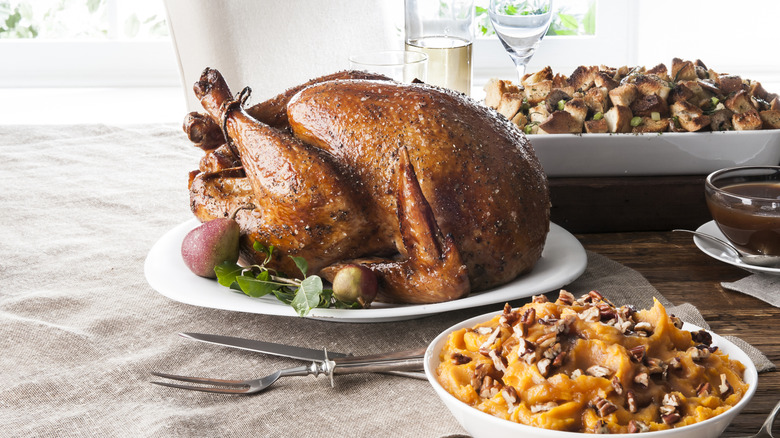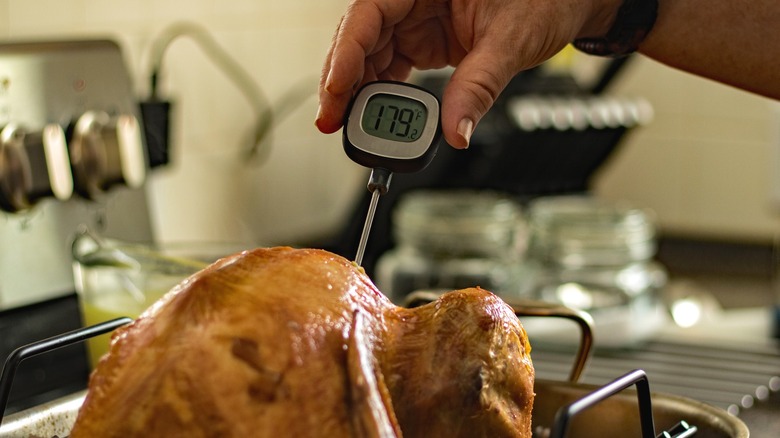4 Expert Tips For Restaurant-Level Thanksgiving Turkey
We may receive a commission on purchases made from links.
The turkey is the crown jewel of your Thanksgiving meal, so it's understandable that you want it to be as perfect as possible. Rather than order a bird from one of the best restaurants for Thanksgiving, Daily Meal is here to help improve your turkey game with expert tips from Jessie-Sierra Ross, a former ballerina-turned-cooking and home entertaining author of "Seasons Around the Table; Effortless Entertaining with Floral Tablescapes & Seasonal Recipes." Speaking to Daily Meal she said, "Remember to flavor your bird before roasting ... The turkey has to be seasoned before roasting to impart any flavor into the meat."
Unless you get Butterball's cook-from-frozen turkey, which is already brined, you can use your own dry or wet brine. On the other hand, Ross says that you could rub a compound herb butter between the skin and meat. If you're looking for a no-fuss way to season your bird, she suggests going old-school and applying oil to the skin with a layer of black pepper and kosher salt.
After seasoning your turkey, Ross recommends that you tuck and truss the wings and legs. She notes that doing so makes the bird more compact so that all parts finish cooking around the same time. "If we leave the wings and drumsticks away from the main body, the dark and white meat will be finished cooking at different times because of the differing thicknesses of the bird."
The best kind of twine for trussing birds is one labeled for butcher or kitchen use, and you can use it for tucking down the wings, too. There's more to making a restaurant-level Thanksgiving turkey than preparing the bird, though. Fortunately, this expert provided more tips for success.
Calibrate your oven, and use a digital thermometer
Even before Thanksgiving arrives, Jessie-Sierra Ross suggests doing a couple of things so that you're confident your turkey will turn out perfect. For example, she believes that checking your oven's temperature is absolutely essential to ensure that the interior heat stays consistent. She explains, "All ovens have slight temperature differences in certain sections, older models especially. It's a good idea to have your oven calibrated well before Thanksgiving to make sure your oven temperatures are even and predictable."
You can calibrate it yourself with help from an online tutorial. If you don't feel comfortable doing it, Ross recommends having a technician service it before the big day instead. Another essential expert tip is to use a digital thermometer. "Knowing the temperature inside your turkey can save you from over- and under-cooking," Ross says.
Relying too much on the built-in, pop-up thermometer that comes with most birds is one of the mistakes everyone makes when cooking Thanksgiving turkey. You can check the accuracy of your meat thermometer beforehand by putting it in iced and boiling water. Then, when you place it in the bird during and after cooking to read its internal temperature, which should reach 165 degrees Fahrenheit, target three different sections: The innermost thigh, innermost wing, and thickest point on the breast.

